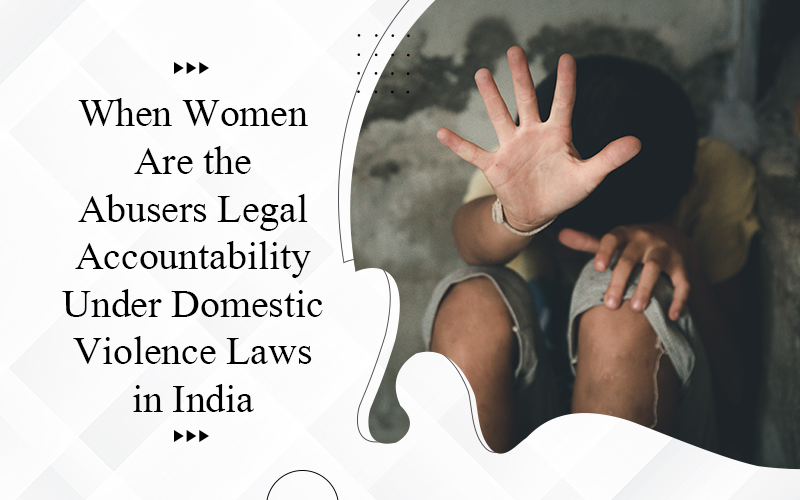Domestic violence laws have historically been framed to protect women, who are statistically more likely to be victims of such abuse. In India, the Protection of Women from Domestic Violence Act, 2005 (PWDVA), was enacted as a civil law to provide effective protection to women against various forms of domestic abuse—physical, emotional, sexual, verbal, and economic—within the household. However, a growing legal and societal debate has emerged: Can women also be held accountable under domestic violence laws when they are the perpetrators?
The answer lies in the nuanced understanding of the Indian legal framework. While the PWDVA is gender-specific and designed to shield women from domestic abuse, it does not mean that women are immune from prosecution under other penal provisions if they engage in violent or abusive behavior themselves.
The Legal Landscape: Protecting the Vulnerable
The PWDVA, by its very design, is a gender-specific law—it recognizes women as victims and men (and sometimes female relatives of the husband or partner) as respondents. It allows women to seek protection orders, residence rights, monetary relief, and custody arrangements. The rationale behind this law stems from centuries of systemic inequality and abuse faced by women within family structures.
However, this protective intent should not be misinterpreted as a license for misuse. Indian courts and law enforcement agencies are increasingly alert to situations where women, too, may be the aggressors, especially in complex domestic disputes. In such cases, while the PWDVA may not directly apply to prosecute women, other legal remedies exist within the Indian Penal Code (IPC).
When Women Are the Perpetrators
The law does not provide blanket immunity to women who engage in abusive behavior. If a woman physically assaults her husband, partner, or in-laws, she can be prosecuted under various sections of the IPC. For example:
- Section 323 IPC – Punishes voluntarily causing hurt.
- Section 324 IPC – Covers causing hurt by dangerous weapons or means.
- Section 506 IPC – Addresses criminal intimidation.
- Section 498A IPC – Though originally meant to protect women from cruelty by husbands or relatives, courts have held that this section can be misused and even used as a tool of harassment.
In a progressive move, courts have entertained counter-cases and cross-complaints filed by men who have suffered domestic abuse at the hands of their spouses. In fact, the judiciary has emphasized that justice should not be gender-biased but should focus on the facts of each case.
Judicial Standpoint
Indian courts have gradually acknowledged the possibility of domestic violence against men. In K. Srinivas Rao v. D.A. Deepa (2013), the Supreme Court stressed the need to curb misuse of Section 498A IPC, where false allegations were often made to harass husbands and in-laws. Similarly, the Bombay High Court and Delhi High Court have observed in several cases that women can indeed be perpetrators of cruelty and violence and must be held accountable accordingly.
Although men do not have a gender-specific domestic violence law to protect them, the courts have suggested that if the legislature does not act to bring parity, the judiciary may have to interpret existing laws in a more gender-neutral manner in appropriate cases.
Societal Perceptions and the Path Forward
Domestic violence is deeply rooted in power dynamics, and historically, women have been at the receiving end of this power imbalance. However, with changing social structures, more women are economically independent and socially empowered. This shift also brings complexities in domestic roles and conflicts, sometimes leading to women engaging in abusive behavior themselves.
Unfortunately, society often hesitates to acknowledge men as victims of domestic abuse, due to gender stereotypes and the stigma attached to male vulnerability. This silence leaves many male victims without a clear path to justice or support.
Need for Gender-Neutral Laws
There is a growing call from legal experts, men’s rights groups, and some lawmakers to make domestic violence laws gender-neutral. Such a framework would protect any individual—regardless of gender—from domestic abuse. A few countries, including the UK, Canada, and Australia, already follow this model, recognizing that both men and women can be victims and perpetrators.
India could consider amending existing laws or enacting new ones that provide equal protection and accountability, based on behavior rather than gender. Until then, the judicial system remains a critical tool in ensuring fairness and preventing misuse.
Conclusion
Domestic violence laws, while primarily crafted to protect women, do not excuse or shield women who commit acts of domestic violence. When a woman is the aggressor, she can be charged under applicable criminal laws and must be held accountable for her actions. Justice demands equality—not just in protection, but also in responsibility. A society striving for gender equality must ensure that the laws apply fairly and effectively, no matter who the victim or the perpetrator is.




